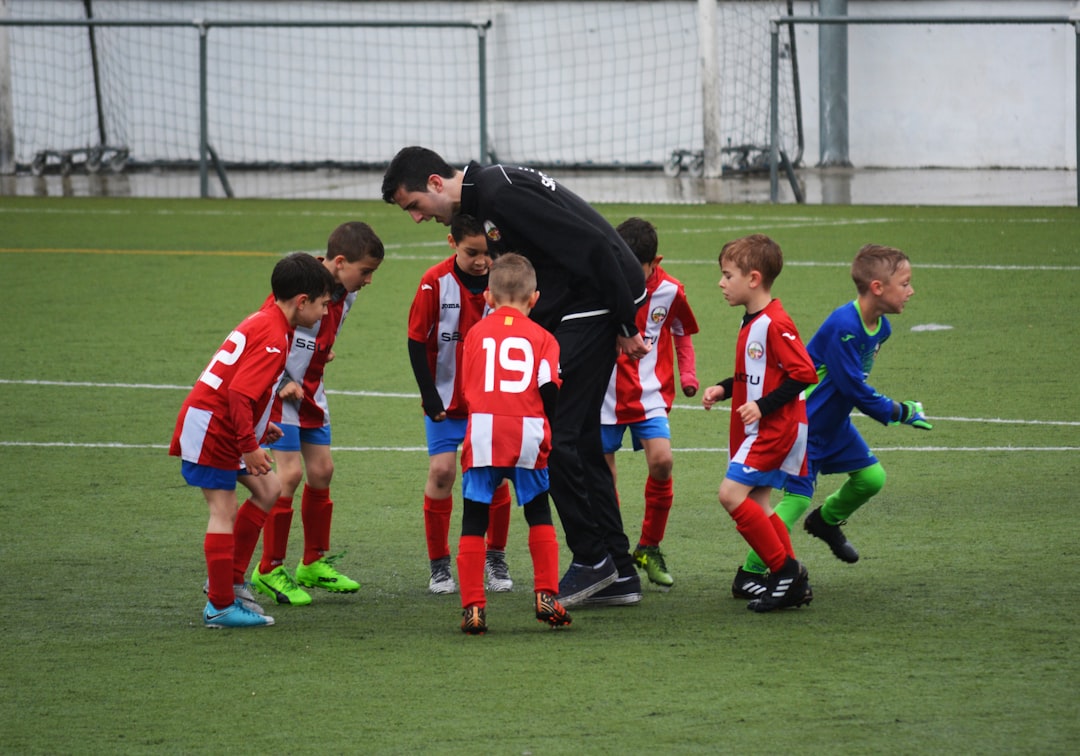CRM user training reinforcement is a critical component of ensuring that employees are proficient in using customer relationship management (CRM) software. While initial training provides employees with the basic knowledge and skills needed to use the CRM system, reinforcement training is essential for solidifying that knowledge and ensuring that employees are able to apply it effectively in their day-to-day work. Without reinforcement, employees may forget important details or fail to fully grasp the capabilities of the CRM system, leading to underutilization and decreased productivity.
Reinforcement training serves to bridge the gap between initial training and long-term proficiency. It helps employees retain information, build confidence in using the CRM system, and stay up-to-date with any new features or updates. By reinforcing their training, employees are better equipped to leverage the full potential of the CRM system, leading to improved customer interactions, better data management, and ultimately, increased sales and customer satisfaction.
Furthermore, reinforcement training can also help address any gaps or challenges that employees may have encountered during initial training. By revisiting key concepts and providing additional support, employees can overcome obstacles and develop a deeper understanding of how to use the CRM system effectively. This ultimately leads to a more skilled and knowledgeable workforce, which is essential for driving business success.
Key Takeaways
- Ongoing training reinforcement is crucial for CRM user proficiency and impact on business outcomes.
- Utilizing feedback and performance metrics is essential for guiding and improving CRM user training reinforcement.
- Leveraging technology for continuous CRM user training can enhance user engagement and knowledge retention.
- Real-world scenarios and role-playing can be effective tools for reinforcing CRM user training and improving skills.
- Consistent CRM user training reinforcement leads to long-term benefits such as improved user proficiency and business performance.
The Role of Ongoing Training in CRM User Proficiency
Ongoing training plays a crucial role in maintaining and improving CRM user proficiency. While initial training provides employees with a foundational understanding of the CRM system, ongoing training ensures that they continue to develop their skills and stay current with any changes or updates to the software. This is particularly important in today’s fast-paced business environment, where technology is constantly evolving and new features are regularly being introduced.
By providing ongoing training, organizations can ensure that their employees are equipped to make the most of the CRM system’s capabilities. This not only benefits individual employees by enhancing their skills and knowledge, but also has a positive impact on the organization as a whole. Employees who receive ongoing training are better able to leverage the CRM system to drive sales, improve customer relationships, and make data-driven decisions.
In addition, ongoing training can also help address any gaps or challenges that may have emerged since the initial training. By providing regular opportunities for employees to refresh their knowledge and skills, organizations can ensure that any issues are promptly addressed and that employees are able to overcome obstacles. This ultimately leads to a more proficient and confident workforce, which is essential for maximizing the return on investment in CRM software.
Strategies for Effective CRM User Training Reinforcement
There are several strategies that organizations can employ to ensure effective CRM user training reinforcement. One approach is to provide regular refresher courses or workshops that allow employees to revisit key concepts and practice using the CRM system in a controlled environment. These sessions can help employees build confidence in their abilities and address any areas where they may be struggling.
Another strategy is to incorporate microlearning into reinforcement training. Microlearning involves breaking down training content into small, bite-sized modules that can be easily consumed and retained by employees. By delivering information in this way, organizations can ensure that employees are able to absorb and apply key concepts more effectively.
Additionally, organizations can also encourage peer learning as a means of reinforcement. This involves creating opportunities for employees to share their knowledge and experiences with one another, either through informal discussions or structured mentoring programs. By learning from their peers, employees can gain new insights and perspectives on how to use the CRM system, which can help reinforce their own understanding.
Utilizing Feedback and Performance Metrics to Guide Training Reinforcement
Feedback and performance metrics play a crucial role in guiding CRM user training reinforcement. By collecting feedback from employees about their training experiences, organizations can gain valuable insights into what is working well and where there may be room for improvement. This feedback can then be used to refine and enhance reinforcement training programs, ensuring that they are as effective as possible.
Performance metrics also provide important data on how well employees are applying their CRM training in their day-to-day work. By tracking key metrics such as user adoption rates, data accuracy, and customer satisfaction scores, organizations can gain a clear understanding of the impact of reinforcement training on employee proficiency. This data can then be used to identify areas for further improvement and tailor reinforcement training to address specific needs.
Furthermore, feedback and performance metrics can also help organizations identify high-performing employees who can serve as mentors or trainers for their peers. By recognizing and leveraging these individuals, organizations can create a more sustainable approach to reinforcement training that relies on internal expertise and experience.
Leveraging Technology for Continuous CRM User Training
Technology plays a crucial role in enabling continuous CRM user training. One way that organizations can leverage technology for training reinforcement is by using learning management systems (LMS) to deliver and track training content. LMS platforms allow organizations to create customized training modules, track employee progress, and provide access to resources such as videos, articles, and quizzes.
Another technology-driven approach is to use gamification to reinforce CRM user training. Gamification involves incorporating game-like elements such as points, badges, and leaderboards into training activities, making them more engaging and motivating for employees. By gamifying reinforcement training, organizations can encourage participation and create a more enjoyable learning experience.
Additionally, organizations can also utilize virtual reality (VR) or augmented reality (AR) technology for CRM user training reinforcement. These immersive technologies allow employees to simulate real-world scenarios and practice using the CRM system in a safe and controlled environment. By providing hands-on experience in this way, organizations can ensure that employees are better prepared to apply their knowledge in their actual work.
Incorporating Real-World Scenarios and Role-Playing into CRM User Training Reinforcement

Incorporating real-world scenarios and role-playing exercises into CRM user training reinforcement can be highly effective in helping employees apply their knowledge in practical situations. By presenting employees with realistic scenarios that they may encounter in their day-to-day work, organizations can help them develop problem-solving skills and gain confidence in using the CRM system.
Role-playing exercises can also be valuable for reinforcing communication skills and customer interactions. By simulating customer interactions or sales scenarios, employees can practice applying their CRM knowledge in a realistic context, allowing them to refine their approach and learn from their experiences in a safe environment.
Furthermore, real-world scenarios and role-playing exercises can also help employees understand the broader impact of their actions within the CRM system. By demonstrating how their use of the CRM system affects customer relationships, sales outcomes, and data accuracy, organizations can help employees appreciate the importance of their role and the value of using the CRM system effectively.
The Long-Term Benefits of Consistent CRM User Training Reinforcement
Consistent CRM user training reinforcement offers numerous long-term benefits for organizations. One of the key benefits is improved employee proficiency and confidence in using the CRM system. By providing regular opportunities for employees to refresh their knowledge and skills, organizations can ensure that they have a workforce that is well-equipped to make the most of the CRM system’s capabilities.
In addition, consistent reinforcement training can also lead to increased user adoption of the CRM system. When employees feel confident in their abilities and understand the value of using the CRM system effectively, they are more likely to embrace it as a central tool in their work. This ultimately leads to better data management, improved customer interactions, and more informed decision-making across the organization.
Furthermore, consistent reinforcement training can also contribute to a culture of continuous learning within the organization. By demonstrating a commitment to ongoing employee development, organizations can foster a workforce that is adaptable, innovative, and open to change. This not only benefits individual employees in their career growth but also positions the organization for long-term success in an ever-evolving business landscape.
In conclusion, CRM user training reinforcement is essential for ensuring that employees are proficient in using CRM software. Ongoing training plays a crucial role in maintaining and improving user proficiency by providing regular opportunities for employees to refresh their knowledge and skills. Effective strategies for reinforcement include providing regular refresher courses, incorporating microlearning, encouraging peer learning, leveraging feedback and performance metrics, utilizing technology for continuous training, incorporating real-world scenarios and role-playing exercises. Consistent reinforcement offers long-term benefits such as improved employee proficiency, increased user adoption of the CRM system, and fostering a culture of continuous learning within the organization.
If you’re interested in learning more about SMS-iT CRM and how it can revolutionize your customer relationships, be sure to check out their overview video on YouTube. This video provides a comprehensive look at the features and benefits of SMS-iT CRM, giving you a better understanding of how it can enhance communication and boost your subscriber list. With the right training and reinforcement strategies, your team can maximize the potential of this powerful tool. For more information on SMS-iT CRM, visit their blog for the latest updates and tips on effective marketing and customer relationship management. https://blog.smsit.ai/2023/10/05/%f0%9f%9a%80-exciting-news-our-sms-it-crm-overview-video-is-now-live-on-youtube-%f0%9f%93%bd%ef%b8%8f%f0%9f%92%a5/
FAQs
What is CRM user training reinforcement?
CRM user training reinforcement refers to the ongoing efforts to support and strengthen the knowledge and skills of CRM users after the initial training. It involves strategies and activities aimed at ensuring long-term user proficiency and maximizing the benefits of the CRM system.
Why is CRM user training reinforcement important?
CRM user training reinforcement is important because it helps to ensure that users retain and apply the knowledge and skills gained from the initial training. It also supports continuous improvement and adaptation to changes in the CRM system, leading to better user adoption and overall success of the CRM implementation.
What are some strategies for CRM user training reinforcement?
Some strategies for CRM user training reinforcement include providing ongoing access to training materials and resources, offering refresher courses or workshops, implementing a mentorship program, conducting regular assessments and feedback sessions, and integrating CRM training into the onboarding process for new employees.
How can CRM user training reinforcement contribute to long-term user proficiency?
CRM user training reinforcement can contribute to long-term user proficiency by promoting continuous learning and skill development, addressing knowledge gaps and challenges as they arise, fostering a culture of knowledge sharing and collaboration, and empowering users to become more self-sufficient in using the CRM system effectively.
What are the benefits of implementing CRM user training reinforcement strategies?
The benefits of implementing CRM user training reinforcement strategies include improved user confidence and competence, increased productivity and efficiency, better data quality and accuracy, higher user satisfaction and engagement, and ultimately, a higher return on investment from the CRM system.







